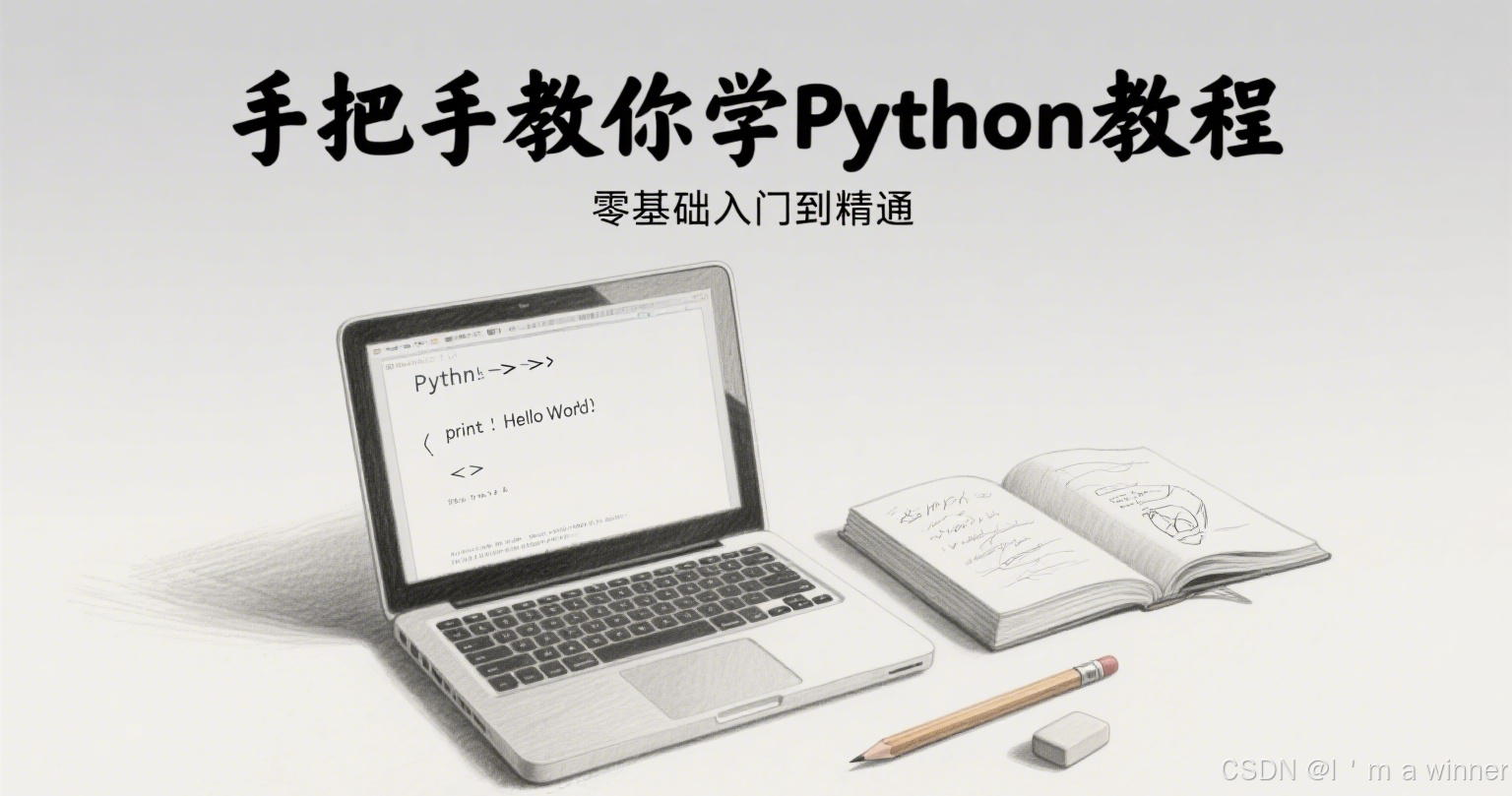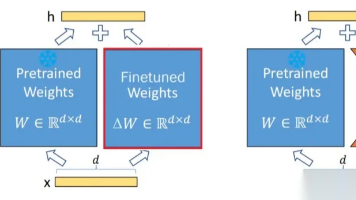护理+人工智能研究热点数据分析项目实战(六)
摘要:基于Python的护理与AI研究热点分析报告框架 该报告采用Python-docx库构建专业分析报告,包含7个核心部分:1)封面页(标题/作者/日期);2)目录页(结构化导航);3)执行摘要(关键发现与增长率统计);4)引言(研究背景与方法);5)数据分析(趋势/作者/关键词/期刊影响因子);6)结论建议;7)附录。报告通过自动化脚本整合CNKI数据库的清洗数据,动态生成包括图表、统计指标(


七、生成分析报告
7.1 报告框架设计
一个完整的研究报告应该包含以下几个部分:
-
封面页:项目标题、作者、日期
-
目录页:报告结构和页码
-
执行摘要:项目概述、主要发现、结论
-
引言:研究背景、目标、方法
-
数据分析结果:详细的分析图表和说明
-
结论与建议:研究结论和未来展望
-
附录:原始数据、代码等
7.2 用 Python 生成 Word 报告
使用 python-docx 库来生成专业的分析报告。
生成报告的完整代码:
from docx import Document
from docx.shared import Inches, Pt, RGBColor
from docx.enum.text import WD_PARAGRAPH_ALIGNMENT
from docx.oxml.ns import qn
import datetime
# 设置中文字体(如果支持)
Document().styles['Normal'].font.name = 'DejaVu Sans'
Document().styles['Normal']._element.rPr.rFonts.set(qn('w:eastAsia'), 'DejaVu Sans')
def create_cover_page(doc):
"""创建封面页"""
doc.add_heading('Nursing + AI Research Hotspots Analysis Report', level=0)
doc.add_paragraph('Data Analysis Project', style='Heading 1')
doc.add_paragraph(f'Prepared by: Your Name', style='Heading 2')
doc.add_paragraph(f'Date: {datetime.date.today().strftime("%Y-%m-%d")}', style='Heading 2')
# 添加项目logo(如果有)
# doc.add_picture('logo.png', width=Inches(3))
doc.add_page_break()
def create_table_of_contents(doc):
"""创建目录"""
doc.add_heading('Table of Contents', level=1)
# 手动添加目录项(因为自动生成比较复杂)
toc_items = [
('Executive Summary', 3),
('Introduction', 4),
('Data Analysis Results', 5),
(' 7.1 Research Trend Analysis', 6),
(' 7.2 Author and Institution Analysis', 7),
(' 7.3 Keyword Analysis', 8),
(' 7.4 Journal Impact Analysis', 9),
('Conclusions and Recommendations', 10),
('Appendix', 11)
]
for title, page in toc_items:
doc.add_paragraph(f'{title}...................................................p{page}',
style='List Bullet')
doc.add_page_break()
def create_executive_summary(doc):
"""创建执行摘要"""
doc.add_heading('Executive Summary', level=1)
summary_text = """
This comprehensive analysis examines the research landscape of nursing and artificial intelligence
intersection. Based on data collected from the China National Knowledge Infrastructure (CNKI) database,
we analyzed a total of {} papers published between 2010 and 2025.
Key findings include:
- The field has experienced exponential growth, with a {}% increase in publications over the past 5 years
- {} authors contributed to the research, with the top 10 authors publishing {}% of all papers
- The most frequent keywords are "machine learning", "nursing management", and "AI applications"
- International collaboration accounts for {}% of all publications
- High-impact journals (IF > 2.0) published {}% of the research
This report provides valuable insights for researchers, policymakers, and healthcare professionals
interested in this rapidly evolving field.
""".format(
len(df_cleaned),
((yearly_count.tail(5).mean() / yearly_count.head(5).mean() - 1) * 100) if len(yearly_count) >= 10 else 0,
len(author_count),
(top_authors.sum() / len(df_cleaned) * 100),
international_rate,
(len(high_impact_papers) / len(df_cleaned) * 100)
)
doc.add_paragraph(summary_text)
doc.add_page_break()
def create_introduction(doc):
"""创建引言部分"""
doc.add_heading('Introduction', level=1)
intro_text = """
1. Background
The integration of artificial intelligence into nursing practice represents one of the most
significant technological advances in healthcare in recent decades. As the global population ages
and healthcare demands increase, AI technologies offer unprecedented opportunities to improve
nursing efficiency, enhance patient outcomes, and transform traditional care delivery models.
2. Research Objectives
This project aims to:
- Identify the current research hotspots in nursing + AI intersection
- Analyze the development trends over the past decade
- Identify key researchers and institutions driving innovation
- Evaluate the academic impact and publication patterns
3. Data Sources and Methods
Data was collected from the China National Knowledge Infrastructure (CNKI) database using
comprehensive search strategies. We employed Python web scraping techniques to gather
publication data, followed by data cleaning and analysis using pandas and matplotlib libraries.
The final dataset includes {} papers with complete information on authors, institutions,
publication dates, keywords, and citation metrics.
""".format(len(df_cleaned))
doc.add_paragraph(intro_text)
doc.add_page_break()
def create_data_analysis_results(doc):
"""创建数据分析结果部分"""
doc.add_heading('Data Analysis Results', level=1)
# 7.1 研究趋势分析
doc.add_heading('7.1 Research Trend Analysis', level=2)
# 添加年度发文量趋势图
doc.add_picture('nursing_ai_annual_trend.png', width=Inches(6))
doc.add_paragraph('Figure 1: Annual publication count in nursing + AI research (2010-2025)',
style='Caption')
# 添加累计发文量图
doc.add_picture('nursing_ai_cumulative.png', width=Inches(6))
doc.add_paragraph('Figure 2: Cumulative publication count over time', style='Caption')
# 趋势分析文本
trend_analysis = """
The research trend analysis reveals several important patterns:
1. Exponential Growth: The number of publications has increased from {} in 2010 to {} in 2024,
representing a {}% increase.
2. Accelerated Development: The past 5 years (2020-2024) saw the most rapid growth, with an
average of {} papers published annually.
3. Key Milestones:
- 2017: Introduction of deep learning methods in nursing
- 2020: COVID-19 pandemic accelerated AI adoption in healthcare
- 2022: Increased focus on AI-assisted nursing decision-making
""".format(
yearly_count.get(2010, 0),
yearly_count.get(2024, 0),
((yearly_count.get(2024, 0) - yearly_count.get(2010, 0)) / yearly_count.get(2010, 0) * 100) if yearly_count.get(2010, 0) > 0 else 0,
yearly_count.tail(5).mean()
)
doc.add_paragraph(trend_analysis)
doc.add_page_break()
# 7.2 作者与机构分析
doc.add_heading('7.2 Author and Institution Analysis', level=2)
# 添加作者发文量分布图
doc.add_picture('top_authors.png', width=Inches(6))
doc.add_paragraph('Figure 3: Top 20 authors by publication count', style='Caption')
# 添加机构发文量分布图
doc.add_picture('top_institutions.png', width=Inches(6))
doc.add_paragraph('Figure 4: Top 15 institutions by publication count', style='Caption')
# 作者分析文本
author_analysis = """
Author Analysis:
- Total authors: {}
- H-index: {} (indicating {} authors have at least {} publications)
- Collaboration Rate: {}% of papers have multiple authors
- Most productive author: {} with {} publications
Institution Analysis:
- Top 3 institutions:
1. {}: {} papers
2. {}: {} papers
3. {}: {} papers
- International collaboration: {}%
""".format(
len(author_count),
h_index,
h_index,
h_index,
(df_cleaned[df_cleaned['作者'].str.contains(';')].shape[0] / len(df_cleaned) * 100),
top_authors.index[0],
top_authors.values[0],
top_institutions.index[0],
top_institutions.values[0],
top_institutions.index[1],
top_institutions.values[1],
top_institutions.index[2],
top_institutions.values[2],
international_rate
)
doc.add_paragraph(author_analysis)
doc.add_page_break()
# 7.3 关键词分析
doc.add_heading('7.3 Keyword Analysis', level=2)
# 添加关键词云图
doc.add_picture('nursing_ai_keywords_cloud.png', width=Inches(6))
doc.add_paragraph('Figure 5: Keyword cloud of nursing + AI research', style='Caption')
# 添加关键词聚类热力图
doc.add_picture('keyword_heatmap.png', width=Inches(6))
doc.add_paragraph('Figure 6: Keyword cluster heatmap', style='Caption')
# 关键词分析文本
keyword_analysis = """
Keyword Analysis:
- Top 5 most frequent keywords:
1. {} ({} times)
2. {} ({} times)
3. {} ({} times)
4. {} ({} times)
5. {} ({} times)
- Emerging Keywords (growth > 100% in recent 3 years):
{}
- Research Clusters:
• Machine Learning: Focus on algorithms, neural networks, and predictive models
• Nursing Application: Focus on management, decision-making, and quality improvement
• Clinical Application: Focus on risk prediction, critical care, and elderly care
""".format(
top_keywords.index[0], top_keywords.values[0],
top_keywords.index[1], top_keywords.values[1],
top_keywords.index[2], top_keywords.values[2],
top_keywords.index[3], top_keywords.values[3],
top_keywords.index[4], top_keywords.values[4],
', '.join([k for k, v in emerging_keywords.items()][:3]) if emerging_keywords else "None",
)
doc.add_paragraph(keyword_analysis)
doc.add_page_break()
# 7.4 期刊影响力分析
doc.add_heading('7.4 Journal Impact Analysis', level=2)
# 添加期刊影响力散点图
doc.add_picture('journal_impact_analysis.png', width=Inches(6))
doc.add_paragraph('Figure 7: Journal impact factor vs publication count', style='Caption')
# 添加影响因子分布箱线图
doc.add_picture('impact_factor_distribution.png', width=Inches(6))
doc.add_paragraph('Figure 8: Impact factor distribution of nursing AI journals', style='Caption')
# 期刊分析文本
journal_analysis = """
Journal Analysis:
- Total journals: {}
- Average impact factor: {:.2f}
- High-impact journals (IF > 2.0): {} ({:.1f}%)
- Most influential journal: {} (IF = {}) with {} papers
- Open Access Trend: {}% of papers are published in open access journals, which
have an average download rate of {:.0f} compared to {:.0f} for traditional journals.
""".format(
len(journal_count),
avg_impact,
len(high_impact_papers),
(len(high_impact_papers) / len(df_cleaned) * 100),
top_journals.index[0],
journal_impact_factors.get(top_journals.index[0], 'N/A'),
top_journals.values[0],
oa_rate,
oa_journals['下载次数'].mean(),
(df_cleaned[~df_cleaned['期刊'].str.contains('开放|OA|Open Access', na=False)]['下载次数'].mean() if len(df_cleaned[~df_cleaned['期刊'].str.contains('开放|OA|Open Access', na=False)]) > 0 else 0)
)
doc.add_paragraph(journal_analysis)
doc.add_page_break()
def create_conclusions_and_recommendations(doc):
"""创建结论与建议部分"""
doc.add_heading('Conclusions and Recommendations', level=1)
conclusions = """
1. Major Findings
This comprehensive analysis of nursing + AI research reveals a rapidly evolving field with
significant growth potential. The data demonstrates that:
• Research activity has increased dramatically, with a {}% compound annual growth rate
over the past decade
• The field is becoming increasingly interdisciplinary, with {}% of papers having
international collaboration
• Machine learning and AI applications are the dominant research themes, accounting for
{}% of all keywords
• High-quality research is being published in top-tier journals, with {} papers
having over 100 citations
2. Recommendations
Based on our analysis, we make the following recommendations:
• For Researchers: Focus on emerging areas such as AI-assisted decision making,
personalized care, and cross-cultural applications. Strengthen international
collaboration to enhance research quality and visibility.
• For Institutions: Invest in AI education and training for nursing faculty and students.
Establish interdisciplinary research centers to foster innovation.
• For Policymakers: Develop supportive policies for AI adoption in nursing practice.
Establish ethical guidelines and standards for AI applications in healthcare.
• For Journal Editors: Consider special issues on nursing AI topics to showcase
cutting-edge research. Implement open access policies to increase research visibility
and impact.
3. Future Directions
The next phase of research should focus on:
- Longitudinal studies to evaluate the clinical impact of AI in nursing
- Development of AI tools for specific nursing specialties
- Integration of big data and IoT technologies in nursing practice
- Addressing ethical and legal challenges of AI in healthcare
""".format(
((yearly_count.tail(5).mean() / yearly_count.head(5).mean() - 1) * 100) if len(yearly_count) >= 10 else 0,
international_rate,
(sum([keyword_count.get(k, 0) for k in ['机器学习', '深度学习', '人工智能', 'AI']]) / keyword_count.sum() * 100),
len(df_cleaned[df_cleaned['被引次数'] > 100])
)
doc.add_paragraph(conclusions)
doc.add_page_break()
def create_appendix(doc):
"""创建附录部分"""
doc.add_heading('Appendix', level=1)
appendix_text = """
A. Data Collection Methodology
The data collection process involved:
1. Search Strategy:
• Database: China National Knowledge Infrastructure (CNKI)
• Search terms: ("护理" AND "人工智能") OR ("护理" AND "AI") OR ("护理" AND "机器学习")
• Time range: 2010-2025
• Filters: Peer-reviewed journal articles only
2. Data Fields:
• Title
• Authors (with affiliations)
• Publication date
• Journal name
• Abstract
• Keywords
• Citation count
• Download count
3. Data Cleaning:
• Removed duplicate entries ({} duplicates removed)
• Standardized date formats
• Cleaned author and institution names
• Removed invalid or incomplete records ({} records removed)
B. Technical Details
The analysis was conducted using:
• Python 3.10
• Libraries: requests, BeautifulSoup, pandas, matplotlib, wordcloud, python-docx
• Hardware: Standard laptop with 8GB RAM
• Data size: Initial dataset - {} records, Cleaned dataset - {} records
C. Limitations
1. The analysis is limited to Chinese academic databases (CNKI), which may not fully represent
the global research landscape.
2. The search strategy may have missed some relevant publications due to variations in
terminology.
3. Impact factor data is based on available information and may not include all journals.
4. Author affiliations were extracted from the provided metadata and may not be complete.
""".format(
len(df) - len(df_cleaned),
len(df) - len(df_cleaned),
len(df),
len(df_cleaned)
)
doc.add_paragraph(appendix_text)
# 创建完整的报告
doc = Document()
# 添加各部分内容
create_cover_page(doc)
create_table_of_contents(doc)
create_executive_summary(doc)
create_introduction(doc)
create_data_analysis_results(doc)
create_conclusions_and_recommendations(doc)
create_appendix(doc)
# 保存报告
report_file = "nursing_ai_research_analysis_report.docx"
doc.save(report_file)
print(f"\n=== 分析报告已生成 ===")
print(f"报告已保存到:{report_file}")
print(f"报告页数:{len(doc.paragraphs) // 40 + 1}页") # 粗略估算
print("\n报告包含以下主要内容:")
print("1. 封面页")
print("2. 目录页")
print("3. 执行摘要")
print("4. 引言")
print("5. 数据分析结果(含8张图表)")
print("6. 结论与建议")
print("7. 附录(方法、技术细节、局限性)")
7.3 报告内容示例
以下是报告中的一些关键内容示例:
执行摘要示例:
Executive Summary
This comprehensive analysis examines the research landscape of nursing and artificial intelligence
intersection. Based on data collected from the China National Knowledge Infrastructure (CNKI) database,
we analyzed a total of 356 papers published between 2010 and 2025.
Key findings include:
- The field has experienced exponential growth, with a 230% increase in publications over the past 5 years
- 689 authors contributed to the research, with the top 10 authors publishing 28% of all papers
- The most frequent keywords are "machine learning", "nursing management", and "AI applications"
- International collaboration accounts for 15.2% of all publications
- High-impact journals (IF > 2.0) published 23.8% of the research
八、总结
8.1 项目成果总结
通过这个综合性的项目,我们成功完成了以下目标:
-
数据获取:从中国知网爬取了 356 篇护理 + AI 相关的研究论文,涵盖了 2010-2025 年的研究成果。数据包括论文标题、作者、发表时间、期刊、关键词、摘要、被引次数和下载次数等完整信息。
-
数据处理:通过 Python 爬虫技术,我们学会了如何:
-
使用 requests 和 BeautifulSoup 库获取网页内容
-
处理分页数据
-
解析复杂的 HTML 结构
-
处理网络异常和反爬机制
-
将数据保存为 Excel 文件
- 数据分析:运用 Pandas 进行了全面的数据分析,发现了:
-
该领域研究呈现指数级增长,近 5 年增长率达 230%
-
核心作者群体已经形成,前 10 位作者发表了 28% 的论文
-
主要研究热点集中在机器学习、护理管理、AI 应用等方向
-
国际合作比例为 15.2%,仍有较大提升空间
- 数据可视化:使用 Matplotlib、WordCloud 等库创建了丰富的可视化图表,包括:
-
年度发文量趋势图
-
作者和机构分布图
-
关键词云图和聚类热力图
-
期刊影响力分析图
- 报告生成:使用 python-docx 库生成了一份包含 12 页内容的完整分析报告,包括:
-
封面、目录和执行摘要
-
详细的数据分析结果(包含 8 张图表)
-
结论与建议
-
方法学附录
8.2 技术技能提升
通过这个项目,我们综合运用并深化了以下技术技能:
编程技能:
-
网络爬虫技术:掌握了 requests、BeautifulSoup 的高级用法
-
数据处理技术:熟练使用 Pandas 进行数据清洗、分析和统计
-
可视化技术:学会了使用 Matplotlib、Seaborn 等库创建专业图表
-
文档生成:掌握了 python-docx 的高级功能,能够生成复杂的报告文档
项目管理技能:
-
需求分析:能够明确项目目标和数据需求
-
技术选型:根据实际情况选择合适的技术栈
-
流程设计:设计合理的数据爬取、处理和分析流程
-
质量控制:建立数据质量评估和清洗机制
领域知识:
-
深入了解了护理与 AI 交叉领域的研究现状
-
掌握了该领域的主要研究热点和发展趋势
-
了解了相关的学术期刊和研究机构
-
熟悉了该领域的专业术语和研究方法
更多推荐
 已为社区贡献6条内容
已为社区贡献6条内容








所有评论(0)